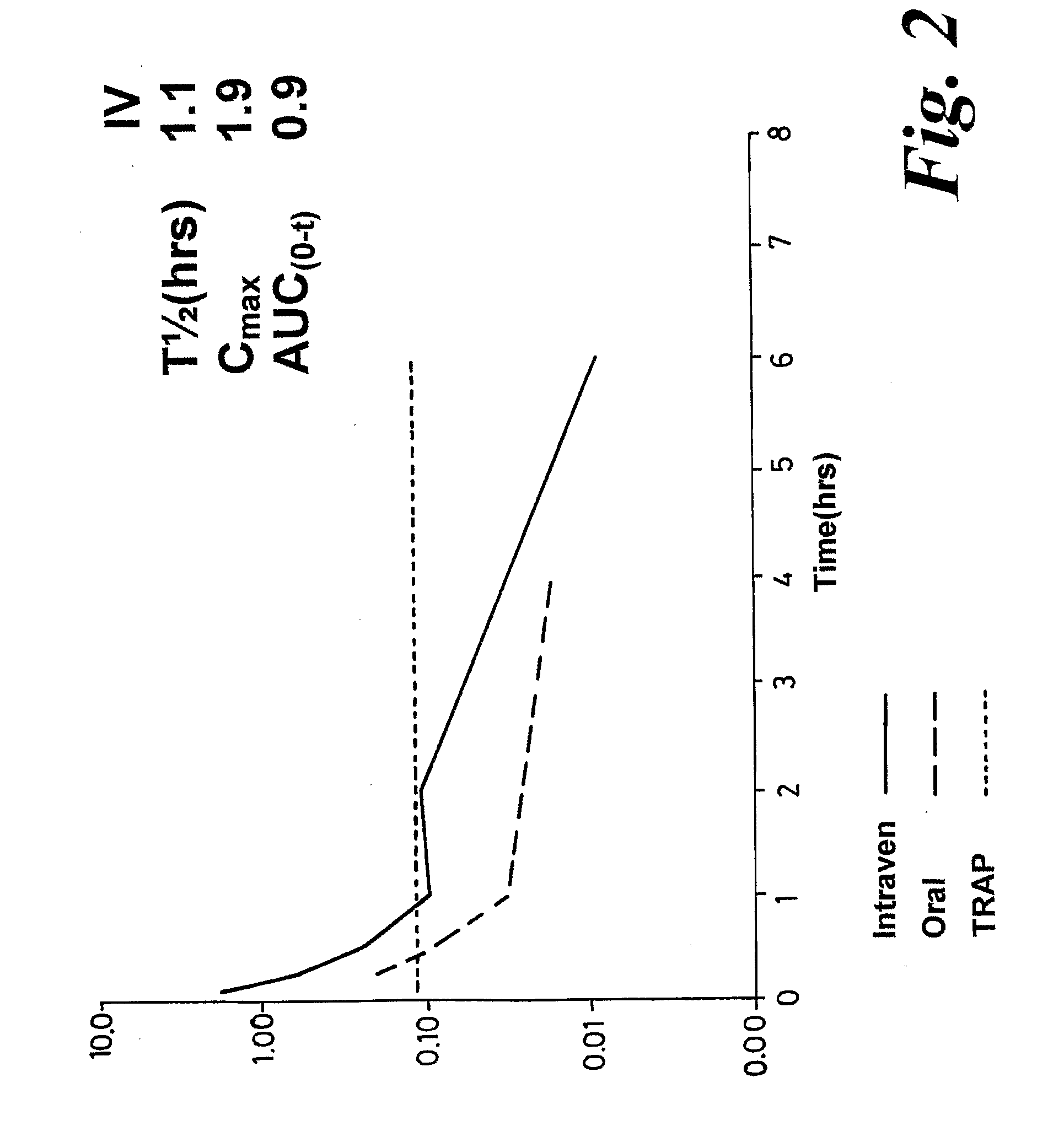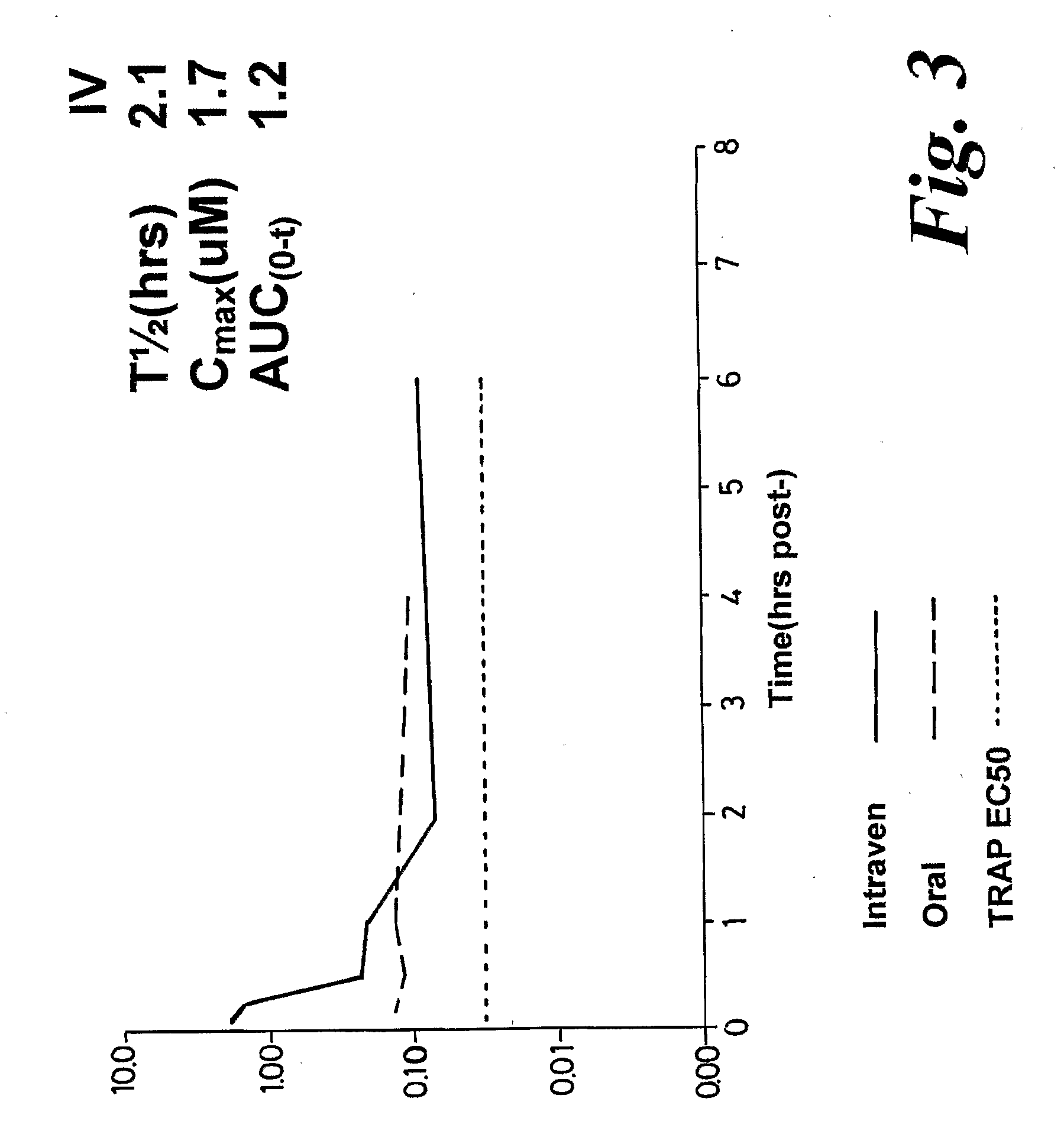Cancer Treatment Using Specific 3,6,9-Substituted Acridines
a technology of acridine and acridine, which is applied in the direction of biocide, cardiovascular disorder, drug composition, etc., can solve the problems of uncontrolled cellular proliferation, limited number, and stage for a potential “end-replication problem
- Summary
- Abstract
- Description
- Claims
- Application Information
AI Technical Summary
Benefits of technology
Problems solved by technology
Method used
Image
Examples
example 1
Compound Synthesis
[0296]The acridone and acridine compounds of the present invention may be prepared, for example, by the methods illustrated in FIG. 1, or other well known methods such as Matsumura, 1929 and Korolev et al., 1977 (and references cited therein) or by adaptation of any of these methods in ways within the knowledge of the skilled person.
example 2
[0297]All compounds were tested using a Taq assay to eliminate broad-spectrum polymerase inhibitors and thus filter out any false positives which might have occurred in the TRAP assay. Thus, preferred compounds are “Taq-negative.” Compounds were tested as their acid addition salts at various final concentrations (0.1, 0.5, 1, 5, 10, 20 and 50 μM) in a PCR 50 μL master mix containing 10 ng pCl-neo mammalian expression vector (Promega, Southampton, UK) and forward (GGAGTTCCGCGTTACATAAC) and reverse (GTCTGCTCGAAGCATTAACC) primers (200 nmol) as described in the art (see, e.g., Perry et al., 1998a). The product of approximately 1 kb was visualised on a 2% w / w agarose gel following amplification (30 cycles of 94° C. for 1 min, 55° C. for 1 min and 72° C. for 2.5 min). The Taq assay was carried out until no Taq polymerase inhibition was observed. All compounds were found to be Taq negative.
Modified Telomeric Repeat Amplification Protocol (TRAP) Assay
[0298...
example 4
Pharmacokinetic Evaluation
Test compound
[0305]The test article is identified as BSG17 and has been studied in comparison to BSG01 (BRACO-19). The vials containing bulk test article were stored at room temperature (15-30° C.).
PUM
| Property | Measurement | Unit |
|---|---|---|
| Molar density | aaaaa | aaaaa |
| Temperature | aaaaa | aaaaa |
| Temperature | aaaaa | aaaaa |
Abstract
Description
Claims
Application Information
 Login to View More
Login to View More - R&D
- Intellectual Property
- Life Sciences
- Materials
- Tech Scout
- Unparalleled Data Quality
- Higher Quality Content
- 60% Fewer Hallucinations
Browse by: Latest US Patents, China's latest patents, Technical Efficacy Thesaurus, Application Domain, Technology Topic, Popular Technical Reports.
© 2025 PatSnap. All rights reserved.Legal|Privacy policy|Modern Slavery Act Transparency Statement|Sitemap|About US| Contact US: help@patsnap.com



